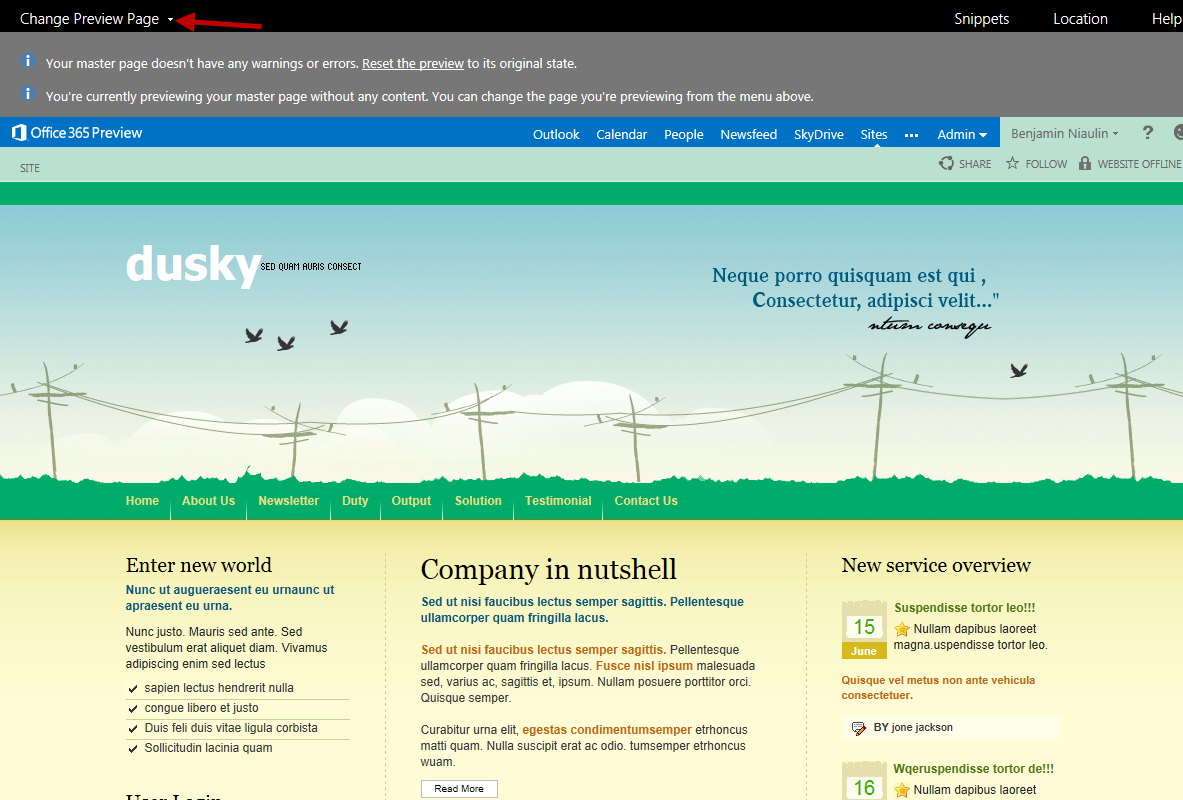Asp.net Master Page Templates Examples
'Master Page' support was one of the most popular features introduced with ASP. Monkey Island 3 Deutsch Kostenlos Vollversion. NET 2.0, and is one of those features that almost every new ASP.NET project now uses to deliver consistent layout template support across a web site. Download The Very Best Of Curtis Mayfield Rapidshare. One of the cooler scenarios that ASP.NET 2. Asus Laptop X54h Drivers on this page. 0 supports is the ability to have 'nested master pages' - where you can create a root master page for a site that defines a site's overall layout, and then create nested master pages that are based on the root master and further customize the layout (for example: you could create a SingleColumn.Master and TwoColumn.Master that defined 1 or 2 column layout structures based on the root master template).

Creating a site-wide page template in ASP.NET is possible through the use of master pages. In a nutshell, a master page is a special type of ASP.NET page that defines the markup that is common among all content pages as well as regions that are customizable on a content page-by-content page basis. With the master page created, we are ready to start creating ASP.NET pages that are bound to the master page. Such pages are referred to as content pages. Let's add a new ASP.NET page to the project and bind it to the Site.master master page. Right-click on the project name in Solution Explorer and choose the Add New Item option.
This nested master page feature is extremely flexible, and enables developers and designers to quickly and very cleanly make changes to the layout and organization of a site with minimal code changes and no content duplication. The one (big) catch, though, is that Visual Studio 2005 doesn't really support using nested master pages, and pages based on nested masters can't be edited within the VS 2005 WYSIWYG designer. The good news is that VS 2008 fully supports nested master pages, and makes using them super easy. Going forward I recommend that almost all ASP.NET projects should advantage of this feature - since it can add tremendous flexibility to the UI of your projects. Using Nested Master Pages With VS 2008 One of the sites I recommend checking out is. This is an online repository of free HTML site templates that you can browse, download and use.
The templates on the site are pure HTML (meaning you can use them with any server-side programming technology), and are built using clean CSS and XHTML markup: To help with this blog post, I picked one of the templates that I thought looked nice. You can browse it online, and download it. Like most web-sites out there, this template has pages that utilize a few different layout approaches for displaying content. For example, it includes a page that uses multiple-columns to layout content: It also has pages that use a single column approach that fills the entire width of the page with content: Using the Above HTML/CSS Template with Nested Master Pages Converting the above template to use ASP.NET and its nested Master Page support is really easy with VS 2008. Step 1: Create a Site.Master template To begin with we can create a new root master page file that we'll use to define the overall layout and structure for all pages on the site. We'll name this file 'Site.Master' and copy/paste the 'outer chrome' HTML from the template we downloaded into it. We'll then add a into the content section in the middle where we'll fill in page specific content.
We'll name this control 'MainContent': Step 2: Create SingleColumn.Master Template We used our Site.Master template above to define the 'outer chrome template' of the site we are working on. We'll now want to create a few nested master pages that provide further templates that customize the layout of the 'MainContent' section. To do this we can right-click in the solution explorer and choose the 'Add New Item' menu option.
• Master pages are a feature of ASP.NET 2.0 that work the same way in Windows SharePoint Services 3.0 and Microsoft Office SharePoint Server 2007 as they do in ASP.NET 2.0. Using master pages, you can create a single page template and then use that template as the basis for multiple pages in an application, instead of having to build each new page from scratch.
Microsoft has made available a package of sample master pages compatible with the Application Templates for Windows SharePoint Services 3.0 to showcase some of the customization options master pages provide. The master pages were built using new CSS and Master Page editing tools within Microsoft Office SharePoint Designer 2007. • To install this download: • Run MasterPage.exe to unpack the master page package to a location on your computer.